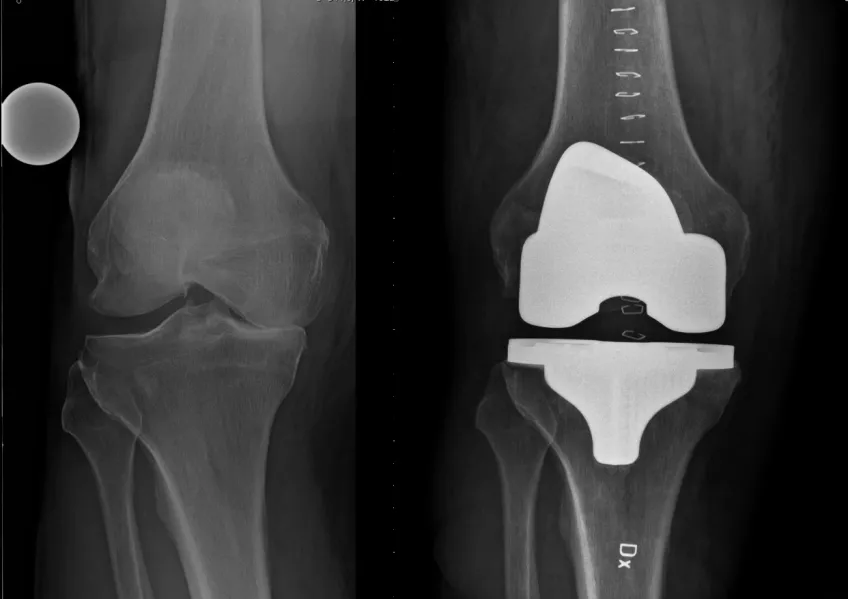Joint replacement surgery
Arthroplasty is the most common surgical procedure for patients with knee and hip osteoarthritis (OA). Between 25,000–30,000 knee and hip arthroplasties are performed each year in Sweden. During an arthroplasty, the damaged joint is replaced either partially (half knee replacement) or completely (total knee replacement) with an artificial joint made from plastic and/or metal. Most patients undergo total knee replacement.
However, only about 1 in 10 patients with knee or hip OA require an arthroplasty. Most do very well without ever getting surgery. Arthroplasty should be a last resort treatment if no other treatment method has worked. For example, if you have suffered from severe pain over a long period of time and the pain doesn’t decrease with exercise and painkillers, you may get referred by your doctor to a specialist in orthopaedics (an orthopedist) to discuss the potential need for joint replacement surgery.
A damaged knee doesn’t always need to be replaced
Although the usual is to replace an OA damaged knee joint with an artificial joint, other knee surgeries may be performed instead. For example, sometimes the orthopedist may choose to realign the knee joint instead of replacing it. This surgical procedure is called an osteotomy and is performed when one side of the knee (usually the inside) is affected by OA and there is an angular deformity of the knee (also known as having knock knees). By removing a small wedge from the outside of the tibia and changing its alignment, you ensure that the load on the knee joint is distributed more evenly. This can both relieve pressure and reduce pain. By doing this, you can in many cases delay or even prevent the need for arthroplasty.
In rare cases, the knee joint may lock or catch, preventing movement. This happens when a “loose body” in the joint (usually a piece of cartilage or bone) gets stuck. The piece is sometimes removed via arthroscopy if the knee keeps locking or if the pain completely impedes movement.
Keep your joints moving
Most patients with symptomatic end-stage OA who undergo knee or hip replacement, experience great symptom relief. However, it is important to exercise even after receiving an artificial joint to maintain good joint function. Building strong muscles and regularly moving the joint is just as important before the operation as after the operation.
The risks of surgery
All surgical procedures carry risks, such as infections or other complications that can be more or less serious. Therefore, when considering surgery, health history and the presence of other risk factors such as obesity, diabetes, and smoking are taken into account.
With that being said, arthroscopy may be the only treatment method that enables a patient to live an active life with significantly reduced OA pain.
Did you know that...
Swedish orthopedists and researchers were the first in the world to collect information about knee and hip implants in a nationwide register. All knee and hip arthroplasties in Sweden are registered in the Swedish Arthroplasty Register (the Swedish Knee Arthroplasty Register and the Swedish Hip Arthroplasty Register have since 2020 merged and formed one common arthroplasty register).
Surgery may be considered when other treatment methods haven't had satisfactory results. Most people experience great pain relief and improved quality of life after surgery. However, it is important to keep in mind that no surgery is without risk.


